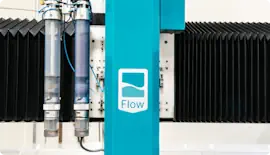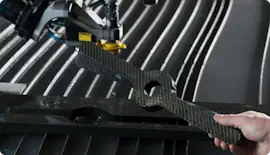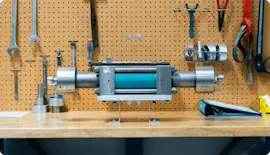Fixture Well & Often
Everyone who cuts parts out of raw stock or a work-piece knows you can’t cut a good part if it isn’t sufficiently held in place. So, what do we have to consider when we’re talking about waterjet cutting? The good news is a waterjet cuts with low force. Where a milling machine might force a rigid cutting tool into a material at 10, 100, 300 pounds of force (4.5, 45, 136 kg), the waterjet head doesn’t touch the part — just the supersonic stream that exits the head touches the part. The machine can’t tell if the jet is cutting material or just shooting into nothingness. The part, however, does feel low forces during cutting.
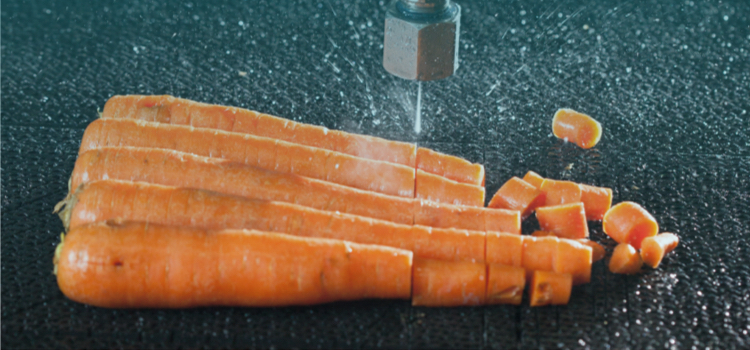
Although the picture is of pure waterjet cutting carrots, I’m going to focus on abrasive waterjet cutting applications in this post. Fixturing requirements are different in pure waterjet cutting, partially because the material is often very light and the jet forces are an order of magnitude (10x) lower compared to abrasive waterjet.
In abrasive waterjet, there are two forces that we consider when holding a work-piece in place to be cut. A lateral force that is pushing the part away from the direction of travel and a vertical force that is highest when piercing a hole. A typical 50 horsepower (37 kW) system will exhibit about 30 to 35 pounds (13 to 16 kg) of vertical force on the part when piercing a hole and the lateral force can be under half a pound for cutting with the smoothest of edge, and 8 to 18 pounds (3.5 to 8 kg) for rough cutting. Thick work-piece cutting tends to exhibit greater lateral forces than thin, but thick materials are also heavier and easier to keep in place. Confused yet? Let me explain what’s going on.
Operators are most concerned with the lateral force because this force tends to want to push the material away from the direction of travel. The faster you try to cut the part, the greater the lateral force. That’s because the stream lag is greater as you cut faster. The jet is being forced to curl backwards and the equal and opposite force is going to try to push the part away. The smoother the edge we want, the less stream lag we will allow, and the lower the lateral force.
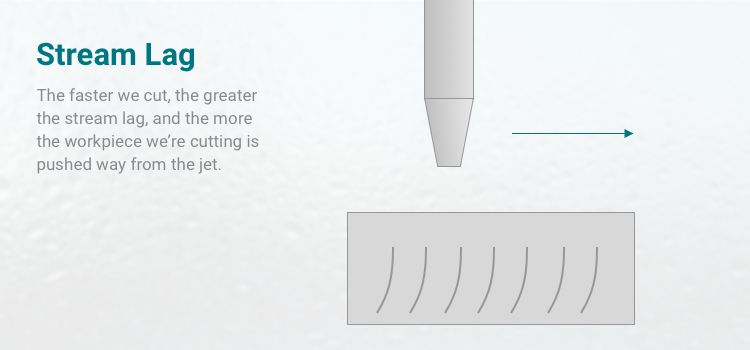
Our customers quickly figure out what it takes to hold down a part, but often make the mistake of clamping the part to something that is wobbly. So, we not only want the part not to be pushed around the table, we want it to remain completely still. And lastly, we need to make sure no part of the cutting head will hit any of the clamps – because that will certainly cause downtime and possibly shop floor profanity.
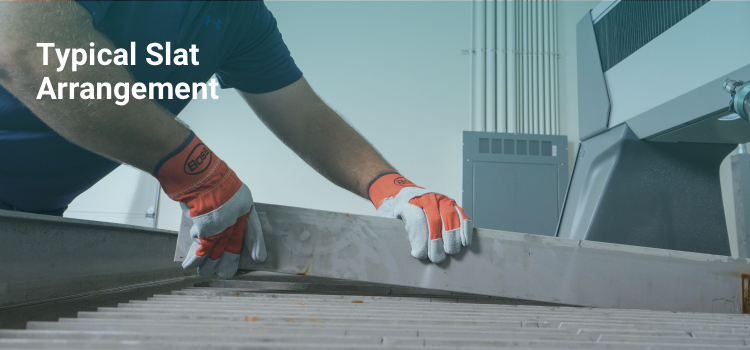
The main clamps you intend to use to hold the part stable should be attached to this aluminum or stainless “tooling plate,” not the slats. You can certainly add secondary clamps coming off these wobbly slats, as long as you first had the main clamps coming from the very solid tooling plate. Make sense? I hope so. Our customers have come up with thousands of ways to fixture parts, and your application might force you to get creative. But in general, this is how it is done. For extremely high tolerance cutting, such as 0.002 inch (0.05mm) or tighter, then more advanced tooling as seen on an EDM or Milling Machine would be in order.
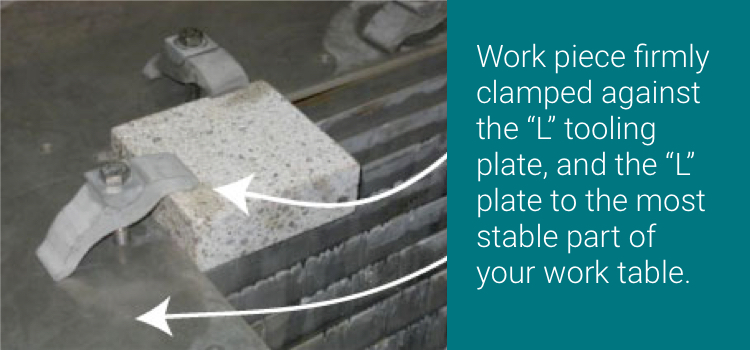

Although the picture is of pure waterjet cutting carrots, I’m going to focus on abrasive waterjet cutting applications in this post. Fixturing requirements are different in pure waterjet cutting, partially because the material is often very light and the jet forces are an order of magnitude (10x) lower compared to abrasive waterjet.
In abrasive waterjet, there are two forces that we consider when holding a work-piece in place to be cut. A lateral force that is pushing the part away from the direction of travel and a vertical force that is highest when piercing a hole. A typical 50 horsepower (37 kW) system will exhibit about 30 to 35 pounds (13 to 16 kg) of vertical force on the part when piercing a hole and the lateral force can be under half a pound for cutting with the smoothest of edge, and 8 to 18 pounds (3.5 to 8 kg) for rough cutting. Thick work-piece cutting tends to exhibit greater lateral forces than thin, but thick materials are also heavier and easier to keep in place. Confused yet? Let me explain what’s going on.
Operators are most concerned with the lateral force because this force tends to want to push the material away from the direction of travel. The faster you try to cut the part, the greater the lateral force. That’s because the stream lag is greater as you cut faster. The jet is being forced to curl backwards and the equal and opposite force is going to try to push the part away. The smoother the edge we want, the less stream lag we will allow, and the lower the lateral force.

Our customers quickly figure out what it takes to hold down a part, but often make the mistake of clamping the part to something that is wobbly. So, we not only want the part not to be pushed around the table, we want it to remain completely still. And lastly, we need to make sure no part of the cutting head will hit any of the clamps – because that will certainly cause downtime and possibly shop floor profanity.
Suggestions for holding a part in place for waterjet cutting
To keep the part in place and steady during abrasive waterjet cutting we consider the following:- Vertical force – Material support table capable of handling the weight of the work-piece plus the vertical force during piercing a hole. This usually is not an issue.
- Lateral force – Make sure the part won’t move around on the worktable
- Collisions – Make sure that no part of the machine tool head will impact a clamp

The main clamps you intend to use to hold the part stable should be attached to this aluminum or stainless “tooling plate,” not the slats. You can certainly add secondary clamps coming off these wobbly slats, as long as you first had the main clamps coming from the very solid tooling plate. Make sense? I hope so. Our customers have come up with thousands of ways to fixture parts, and your application might force you to get creative. But in general, this is how it is done. For extremely high tolerance cutting, such as 0.002 inch (0.05mm) or tighter, then more advanced tooling as seen on an EDM or Milling Machine would be in order.

